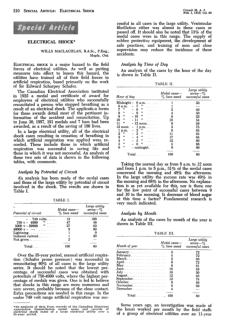Scientific papers 1600 - 1959




Click on the octopus
to return to the top
of the page




Author: Robert Boyle
This paper, that is issued by Doctor Jonathan Bennett,
comprises explanations and comments of the original text
published in 1666.



William Henry is the inventor of the gas law that states
that the amount of dissolved gas in a liquid is proportional
to its partial pressure above the liquid.

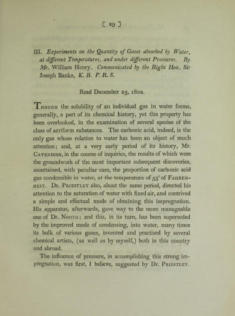

Author: Trigger
In 1839, French engineer Triger overcame challenges
using compressed air to sink a shaft through quicksand to
reach coal in France. He reported effects of pressure,
including workers’ euphoria and ear pain relief
techniques. To investigate these effects, he tested a
dentist's compressed air chamber in Paris. After
modifications, he reached 1.5 bar, but an explosion
occurred. Triger survived and concluded that pressure
exposures were harmless and had no significant effect on
the man physiology.



Authors: Pol & Watelle
It was left for the physicians Pol and Watelle to describe in
1854 the pathological effects experienced by compressed
air workers and to point out that: 'The danger does not lie
in entering a shaft containing compressed-air; nor in
remaining there a longer or shorter time; decompression
alone is dangerous. They reported muscular pains in the
limbs, respiratory and cerebral symptoms due to
decompression and the fact that some men died.
Pol was an engineer, and Watelle was a doctor. They
worked for a mining company in France and created the
first recompression treatment for bends. Pol died from
decompression sickness after helping his workers, and
Watelle wrote about it years later.

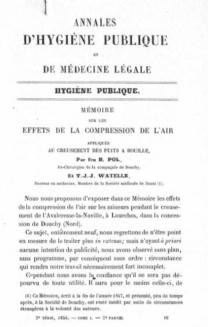

Author: Leroy de Mericourt
This paper is a pathetic description of the lives of sponge
divers in Greece. At the time, the recent introduction of
hard hats equipment has suddenly expanded the
possibility of divers who are now reaching 50 m and
more. But they did not have the tables and use all sort of
empirical rules to avoid decompression sickness.
Dr Leroy de Méricourt, a French Navy doctor, attempts to
draw the lessons learnt and a list of recommended
procedures for the sponge divers.






Author: Paul Bert
“La pression barometrique” is a key document that laid the
foundation of knowledge of pressure's physiological
effects, both at altitude and underwater, with descriptions
of decompression accidents and a first approach to
resolve and avoid them.
Paul Bert has also described the “Acute Oxygen
poisoning” of the Central Nervous System (CNS), also
called the “Paul Bert Effect”.
This document is in French



Author: E Hugh Snell
E Hugh Snell observed that the risk of DCS was increased
due to faulty ventilation in caissons,

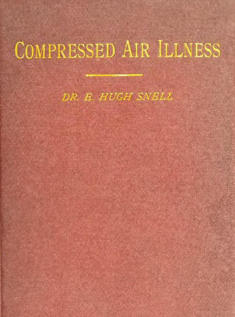





Sir Leonard Hill (1866 - 1952) proposed a linear
continuous decompression in lieu of a staged
decompression. But the practical value of the Haldane
tables in reducing decompression time made these more
acceptable.
Hill's technique is today applied to decompression for
saturation exposures.

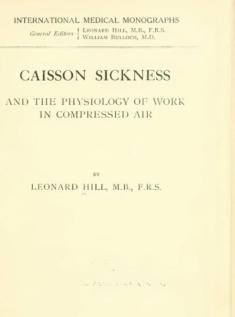

This document, was published by the US Navy diving
experimental unit in 1955. It is based on hadldane
procedures.

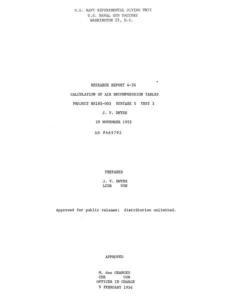

Authors: G. J. Dupfner & h. h. Snider
This document was published by the US Navy diving
experimental unit in 1958.
It describes experimentations performed with five navy
divers, aged 21-34 years, exposed for l2 hours to
increasingly greater pressures until they contracted
decompression sickness.
The exposures were performed first while breathing
compressed air and then a mix of 80% helium — 20%
oxygen.
The document concludes that greater exposures were
tolerated with the He02 mixtures than with air, and that
the use of heliox mixes is feasible.



Edme Mariotte (1620 1684) was a French physicist and
plant physiologist who, independently of Robert Boyle,
discovered the law that states that the volume of a gas
varies inversely with its pressure.
Although widely known as Boyle's law in the United
Kingdom and the United States of America, this basic tenet
of physics is called Mariotte's law in France and many
French-speaking countries, and Boyle-Mariotte law in the
rest of the world and our documents.
Note that this digitalized copy of a 1740 edition comes
from the library of the University of Zurich and is thus
written in the French language of this period. Also, the
printing characters used had minor defects resulting in the
"S" looking like "F". For these reasons, good knowledge of
the French language is necessary for easy reading.



Author: Max Kleiber
Correlation between body size and metabolic rate
introduces concepts that, when clarified, are of great help
in understanding the regulation of the rate of cell
metabolism.
This document is recommended by renowned scientists to
understand the production of pathogen bubbles.

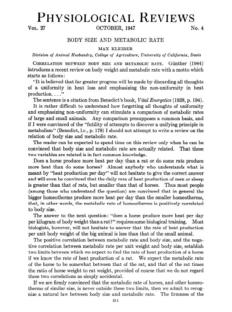
Author: Joseph Priestley
Joseph Priestley is known to have isolated oxygen. He
presented the paper "Experiments & observations on
Different Kinds of Air" to the Royal Society in 1772,
establishing his reputation as a chemist. The article
Experiments and Observations on Different Kinds of Air,
where he enlarged his knowledge regarding the chemical
properties of gases, was published two years later.
As a result of his close relationship with Lavoisier and other
French scientists, Joseph Priestley was obliged to migrate
to America to escape popular vindictive.


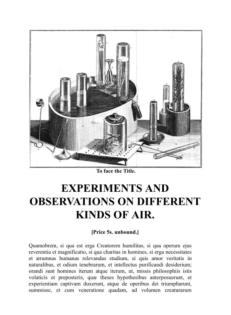

Author: Antoine Lavoisier
Antoine Lavoisier (1743-1794) is known to have
revolutionized chemistry and is often called the father of
modern chemistry. He is known to have discovered
oxygen’s role in combustion and respiration following a
discussion with Joseph Priestley. He also established that
water is a compound of hydrogen and oxygen and found
components such as sulfur, carbon, and hydrogen.
As thanks for his works, Lavoisier was sentenced to death
during the French revolution…

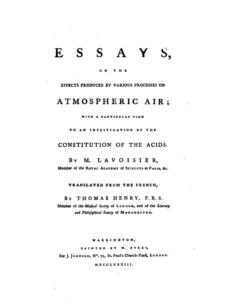


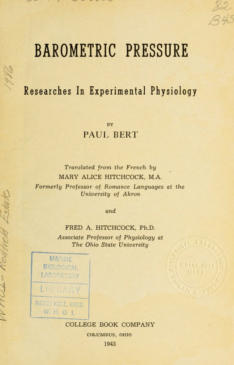

Author: James Lorrain Smith
James Lorrain Smith (1862 - 1931) conducted research on
respiration in collaboration with Sir John Scott Haldane,
basing 1st on the discoveries of Paul Bert he often refers to
in his book. He discovered that oxygen provided at a
partial pressure above a certain threshold (0.5 ata) which
is not elevated enough to trigger acute oxygen poisoning,
results in the inflammation of the lungs. For this reason,
this form of oxygen poisoning is called the "Lorrain Smith
effect".

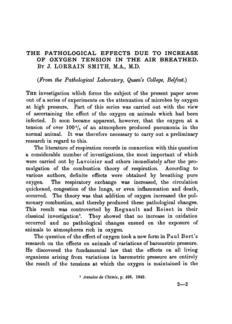

Authors: William c. Stadie, Benjamin c. Riggs, and Niels
Haugaard
This paper, published in 1945, presents experiments on
the effect of oxygen on the liver, kidney, lung, and muscle
tissue of rats. They concluded that oxygen plays little or no
role in the acute phase of oxygen poisoning or the early
death of experimental animals.



Author: F. Dickens
The author of this paper highlighted the mode of
inactivation by oxygen of some enzymes, particularly
those which, like pyruvate oxidase, may play a part in
brain metabolism. These experiments were of a
preliminary and exploratory character. They served mainly
to define some conditions under which this type of
inhibition may occur and to investigate some examples of
protection against oxygen poisoning in enzyme systems.



Author: Robert Boyle
Robert Boyle relates 43 experiments regarding air's
physical and chemical properties, proving its weights and
elasticity, determining that a vacuum restricts sound
transmission and that it is necessary for supporting life and
combustion.



Author: Robert Boyle
This book, published in 1661, presents Boyle’s hypothesis
that matter consisted of corpuscles and clusters of
corpuscles in motion and that every phenomenon was
the result of collisions of particles in motion. This theory
was a precursor to the modern atomic theory, which
states that all matter is composed of atoms, which are in
constant motion and interact with each other through
collisions.


Author: Robert Boyle
Robert Boyle enquired into the Nature of Colours through
experiments and observations in this treaty, published in
1664. The primary purpose of these studies was to
establish that light is based on mechanical or corpuscular
phenomenons.
The corpuscular theory of light has been founded by Isaac
Newton. It states that light is made up of tiny particles
called corpuscles which travel in a straight line with a
specific velocity.

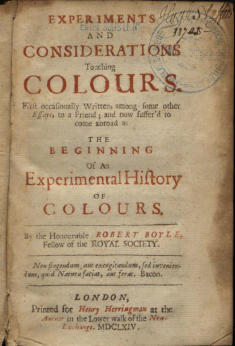

Author: Robert Boyle
This paper, published in 1670, describes experiments that
were conducted to understand respiration and the
composition of the Air

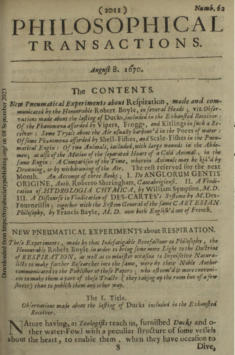

Author: Isaac Newton
The Philosophical Transactions of the Royal Society was a
scientific journal first published by the Royal Society in
1665. In the paper #80 of the edition 1671, Isaac Newton
presented his theory that light is not homogeneous but
consists of rays with different refrangibility, and that colors
are not derived from refractions of natural bodies but are
original and connate properties.

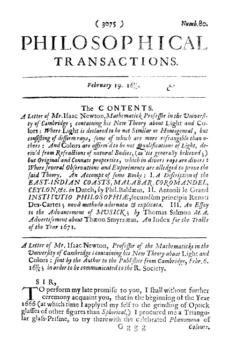

Author: Robert Boyle
This book, published in 1671, contains several tracts,
including “Of a discovery of the admirable rarefaction of
the air,” “New observations about the duration of the
spring of the air,” “New experiments touching the
condensation of the air by meer cold,” and “Its
compression without mechanical engins”

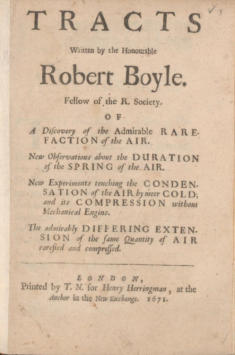

Author: John Dalton
This book, published in 1801, is the original document
describing Dalton’s law ”



Author Andrew H. Smith
This book, published in 1873, is the original report made
by Doctor Andrew H. Smith, who was in charge of the
workers' health during the Brooklyn Bridge (USA)
construction. Like Doctor Jaminet, who was previously in
charge of the workers of St Louis Bridge, he was
confronted with numerous cases of decompression illness
he was unprepared to deal with and had to investigate
the reasons for and find treatments. He reused some of
the solutions experienced by Doctor Jaminet and also
referred to the publications of Paul Bert to sort these
problems the best he could.

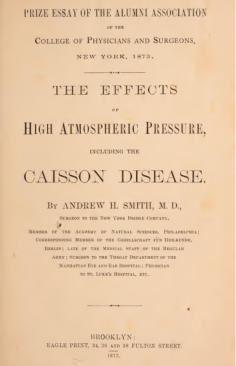

Author: John Scott Haldane
In this paper, Haldane described experiments he made on
himself and other subjects to study the effects of carbon
monoxide on humans. As a result of these experiments, he
concluded that carbon monoxide binds to hemoglobin in
the blood more readily than oxygen.

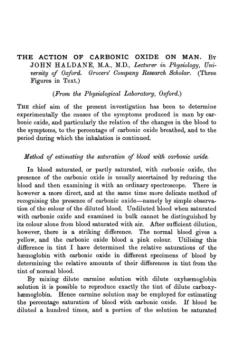

Authors: Haldane and Lorrain Smith
In this artical, Haldane and Lorrain Smith described
investigations on whether diffusion alone could explain
the transfer of oxygen from the air in the pulmonary
alveoli into the blood, or whether other important factors
were involved in this process. They concluded that if the
oxygen tension of the blood leaving the alveolar capillaries
is always, or even occasionally, higher than that of the
alveolar air, diffusion alone cannot explain the transfer.

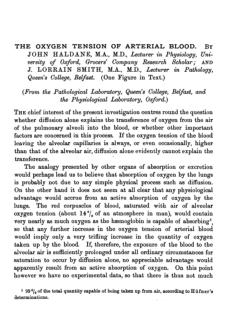

Authors: Joseph Barcroft and John Scott Haldane
Joseph Barcroft and John Scott Haldane published in
1902 this method for investigating the blood gases in
small animals or individual organs such as the salivary
glands.
Note that John Scott Haldane used it during his
experimentations for designing his famous decompression
table.

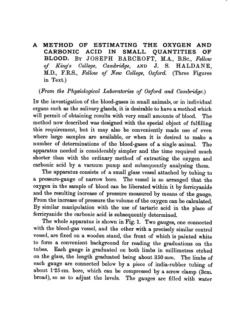

Authors:
Leonard Hill & M. Greenwood
This paper investigates the possibility that oxygen bubbles
are released in the body due to increased barometric
pressure.
The authors found that when compressed air or oxygen is
injected into the body, the oxygen tension is raised from
21% to about 190% of the atmosphere; they concluded
that this could lead to the formation of bubbles in the
blood and other tissues.

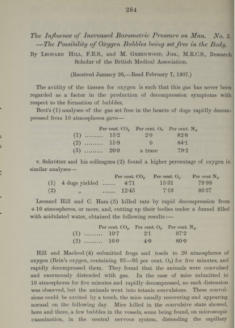

Author: A. Osborne
The method of estimating the oxygen tension of arterial
blood of Haldane and Smith is based upon the theory that
haemoglobin forms a dissociable compound not only
with oxygen but also with carbon monoxide and that
when haemoglobin in solution is exposed to a mixture of
carbon monoxide and oxygen for some time sufficient for
the establishment of equilibrium, the ratio of the pressure
of the carbon monoxide to the pressure of the oxygen in
the air (and of course in the solution) is a constant multiple
of the ratio of the concentration of the
carboxyhaemoglobin to the concentration of the
oxyhaemoglobin.



Author: John Scott Hadane
This document is a concise statement of the facts
concerning the regulation of breathing, the reaction of
the blood, and the phenomena of acidosis as understood
at that time.

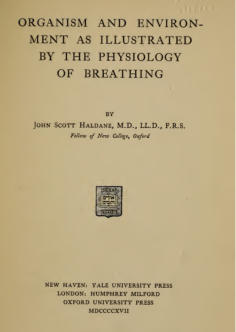

Authors: John Scott Hadane & J. G. Priestley
This article discusses the regulation of breathing, the role
of carbon dioxide in pulmonary ventilation, and the
transportation of carbon dioxide in the blood.



Author: M de G Cribble
This paper compares the symptoms of decompression
sickness in divers and caisson workers who return to
normal atmospheric pressure after working at very high
pressures, and in airmen who reach very low pressures at
great altitude. The author notes that both syndromes are
caused by the formation of gas bubbles in the blood and
body fluids when the tension of dissolved gases becomes
sufficiently greater than that of the surrounding
atmosphere.

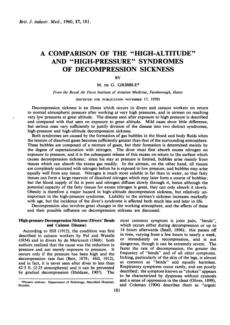
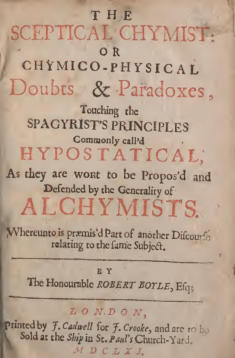

Author: Robert D. Workman
This is one of the 1st documents written by Robert
Workman. It reports the testing and revision of the
method for calculating decompression schedules for dives
longer and deeper than normally require for air diving
operations.
Document published in 1957

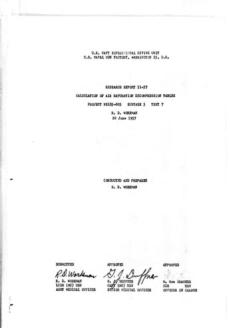

Author: Abraham Ward
Sequential Analysing is a statistical methodology
developed by Abraham Wald to speed up the Allied
equipment production and repair phases during the 2nd
war. It is also used to validate decompression procedures
and is distinguished by its adaptive approach, where the
decision to conclude the experiment depends on the
outcomes observed at each stage. The benefit of
sequential analysis is that it typically requires fewer
observations than other testing methods.



Author: William Feller
Probability is a branch of mathematics that quantifies the
likelihood of an event occurring. It assigns a numerical
value between 0 (indicating impossibility) and 1
(indicating certainty) to represent the likelihood of an
outcome. The higher the probability value, the greater the
likelihood that the event will occur. Calculations based on
probability are utilized in the development of diving tables
and are also applied extensively across various medical
and industrial fields.

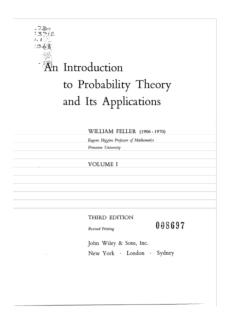

Author: John W. Bean
The effects of oxygen at increased pressure, as
documented by John W. Bean, can be summarized as
follows:
Increased oxygen pressure leads to increased acidity of
arterial blood and decreased heart rate in animals. The
respiratory changes observed are caused by the
combined effects of increased oxygen tension and
increased breathing resistance due to the higher pressure.
Exposure to oxygen at high pressure can result in both
transient and permanent after-effects.

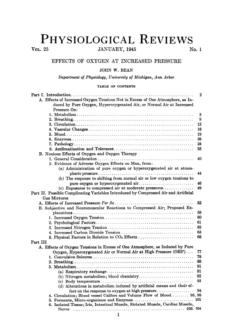

Author: Kenneth W. Donald
This article, published in the British Medical Journal in
1947, detailed the mechanisms and symptoms of oxygen
toxicity, which can lead to seizures and death if untreated.
It also discussed the effects of increased oxygen partial
pressure on the lungs, central nervous system, and other
organs



Authors: Seymour S. Kety and Carl F. Schmidt
This study describes a method for quantitatively
measuring cerebral blood flow in humans using nitrous
oxide inhalation. Initially, this method was applied to study
the effects of different CO2 and O2 tensions on cerebral
circulation. While detailed findings on the effects of
hyperventilation have already been published, the current
paper aims to present the remaining findings. The goal is
to provide evidence on the intrinsic control of human
cerebral circulation based on these quantitative
measurements.

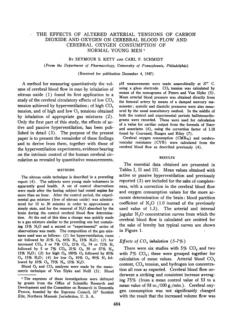
Authors: The Word Medical Association
The Declaration of Geneva is a foundational document of
medical ethics adopted by the World Medical Association
(WMA) in 1948, shortly after the organization's inception.
It is often referred to as the "Physician's Oath" and serves
as a modern version of the Hippocratic Oath, outlining
the ethical principles and professional standards that
physicians are expected to uphold. Since its adoption, the
Declaration has been regularly reviewed and is still
regularly updated.


38 - International code of medical ethics - Declaration of Geneva.
- Published by the Word medical Association
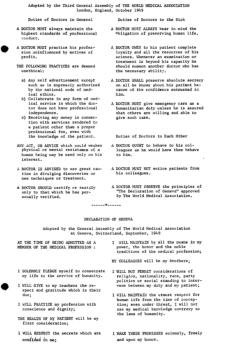
Authors: J.A.P Pare, J.W. Morton, B. Rose
This document discusses carbon dioxide narcosis, which
occurs when elevated CO2 levels in the blood
(hypercapnia) depress the central nervous system,
leading to uncontrolled accelerated breathing rate,
confusion, drowsiness, or coma. It commonly occurs in
patients with chronic lung diseases and can also affect
healthy people during diving operations. The document
explains the condition's symptoms and its management,
including controlled oxygen therapy, treating underlying
infections, and using non-invasive ventilation or
mechanical ventilation in severe cases.


41 - Carbon dioxyde Narcosis and the management of advanced
pulmonary insuficiency.
- Published by the National Library of Medicine


Author: Wills Maclachlan
This document, published in 1959, describes the training,
notably manual resuscitation, provided by the Canadian
Electrical Association to its employees to mitigate the
hazards resulting from electric shocks, and how it
managed this training.


